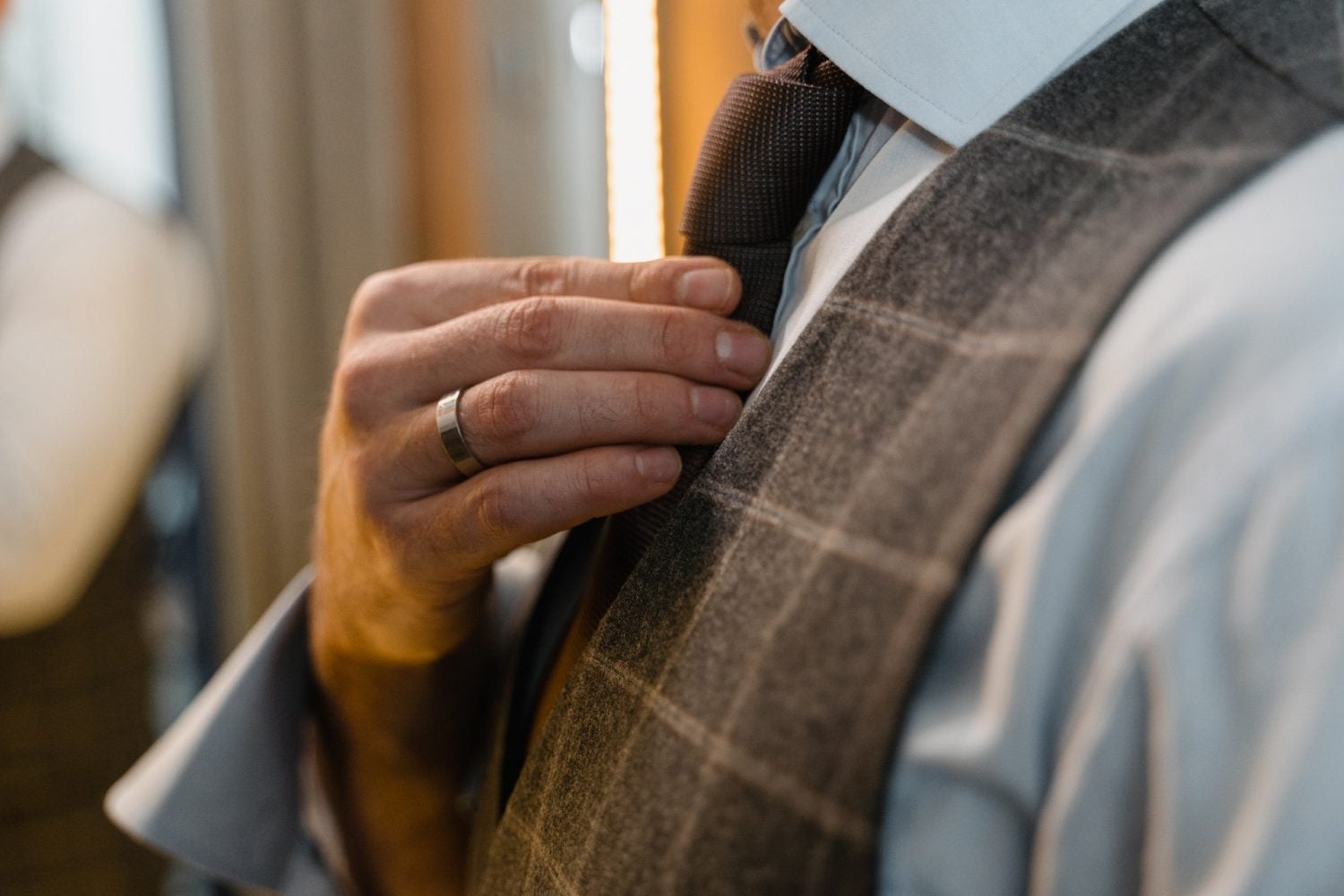Men’s ties have been a staple of men’s fashion for centuries, dating back to the 17th century when Croatian mercenaries wore brightly colored neckwear to distinguish themselves in battle.
Since then, ties have evolved into an essential accessory for professional and formal occasions. From the classic silk four-in-hand tie to the trendy skinny tie, ties have become a symbol of elegance, sophistication, and individual style. In this article, we’ll explore the different types of ties, the materials they’re made of, how to choose the right tie for any occasion, popular tie knots (and how to tie a tie!), and how to properly care for your ties.
Different Types of Ties
The four-in-hand tie is the most common and versatile tie, suitable for most occasions. It is a medium-width tie that can be tied in a simple knot and pairs well with almost any suit and shirt combination. The Half-Windsor tie is a wider tie that is best suited for business settings and formal events. It’s a more substantial knot that sits perfectly with a spread-collar dress shirt. The Full Windsor tie is the widest and most formal tie, perfect for weddings, funerals, and other formal occasions. The bow tie is another formal option, often worn with tuxedos, and comes in various sizes and styles. Finally, the skinny tie is a trendy, modern option that pairs well with slim-fitting suits and dress shirts.
The Materials of Ties
Ties can be made from various materials, each with its own unique characteristics. Silk is the most common material for ties, offering a luxurious and soft texture with a subtle sheen. Wool ties are perfect for colder weather, offering a thicker texture that provides warmth and durability. Cotton ties are perfect for summer, with a breathable and lightweight texture that is perfect for warmer weather. Polyester ties are affordable and easy to maintain, making them a popular option for everyday wear. Linen ties have a unique texture that provides a casual yet elegant look, making them a popular option for summer weddings.
How Can You Choose the Right Tie?
Choosing the right tie can be a daunting task, but it’s essential to complete the overall look of your outfit. The key is to match your tie with your suit and shirt, while considering the occasion and dress code. For business settings, opt for a classic four-in-hand tie or a Half-Windsor tie in muted colors such as navy, gray, or burgundy. For formal events, a Full Windsor tie or a bow tie in black or navy will provide an elegant and sophisticated look. Also, consider the width and length of your tie. The width should match the lapel of your suit, while the length should reach your belt buckle.
Popular Tie Knots
There are various tie knots to choose from, but the four-in-hand knot, Half-Windsor knot, Full Windsor knot, Pratt knot, and Kelvin knot are the most popular. The four-in-hand knot is the simplest and most common, suitable for any occasion. The Half-Windsor knot is slightly more substantial and is best for business settings, while the Full Windsor knot is the largest and most formal knot for weddings and other formal events. The Pratt knot is a symmetrical knot that is perfect for patterned ties, while the Kelvin knot is a simple and asymmetrical knot that is perfect for thinner ties.
If you want to improve your tie-tying skills, there are a few things you can do to better your abilities and boost your confidence. Set aside time to practise different knots until you feel confident, and you’ll avoid the anxiety of trying something new at the last minute. Watch some tutorials online to give you step by step instructions that you can follow. Start with a simple knot and work your way up and use a mirror to see what you’re doing. Don’t be afraid to ask for a hand, either from a family member, friend or salesperson who knows what they’re doing.
Taking Care of Your Ties
Caring for your ties is essential to keep them looking their best and prolong their lifespan. Here are some tips to help you care for your ties:
-
Untie carefully: Always untie your tie carefully after each use. Don’t pull on the narrow end to loosen the knot as this can damage the fabric. Instead, reverse the steps you used to tie the knot and gently pull the knot apart.
-
Store properly: Proper storage is crucial to prevent your ties from creasing and wrinkling. Hang your ties on a tie rack or hanger to keep them straight and prevent them from getting crushed in a drawer or closet.
-
Avoid repeated knots: Tying the same knot repeatedly can cause the fabric to wear down and become damaged. Instead, try different knots or alternate between a few to help prolong the life of your tie.
-
Spot clean: If your tie gets stained, it’s important to act quickly. Blot the stain with a clean cloth and avoid rubbing, which can spread the stain. For tougher stains, use a stain remover specifically designed for ties and follow the instructions carefully.
-
Dry clean only: Many ties are made of delicate fabrics that can be damaged by water or traditional washing methods. Always check the care label before attempting to clean your tie and take it to a professional dry cleaner if it requires special care.
-
Iron carefully: If your tie gets wrinkled, use a cool iron and a pressing cloth to smooth out any wrinkles. Avoid using a hot iron or pressing directly on the tie, which can damage the fabric.
The Art of Tying Neckties
In conclusion, men’s ties have come a long way since their origins on the battlefield. Today, they are an essential, on trend accessory that adds sophistication and elegance to any outfit. With various types of ties, materials, and knot options, it’s essential to choose the right tie for each occasion. Proper care and maintenance are also essential to ensure your ties last for years to come. By following these tips, you’ll be able to wear your ties with confidence and style, making a statement in any setting. So next time you’re getting dressed up, don’t forget to add that finishing touch with a stylish tie.




















